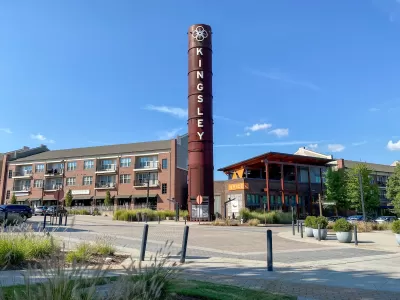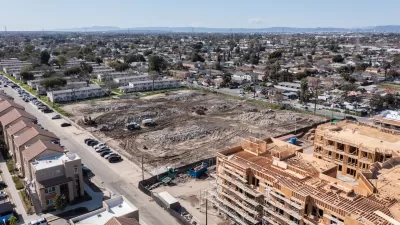How building codes and zoning laws can guide the safe and effective conversion of existing properties to residential units.

An article in Pro Builder outlines ways that developers looking to convert commercial buildings to residential uses can do so safely and cost-effectively.
The article notes that “Building codes play an important role in the adaptive reuse of buildings by ensuring that existing structures remain safe as they serve their new purpose while also preserving the building’s original character and charm.” Cities around the country are passing adaptive reuse ordinances to encourage the redevelopment of underused properties that are already being served by municipal infrastructure.
Because building and zoning codes are key to ensuring the safety of adaptively reused buildings, “communities that adopt and enforce the latest building codes are more likely to receive federal infrastructure funding and additional post-disaster recovery assistance.”
The article goes on to explain the International Existing Building Code (IEBC), which guides safety measures for converting buildings. “The IEBC encourages the continued use and reuse of existing buildings, including historic buildings, by enabling changes in occupancy and use types, such as modifying an office building to be used as multifamily housing, through flexible options that aid design professionals.”
FULL STORY: Building Codes and Adaptive Reuse: Ensuring Safety and Health While Meeting Housing Needs

Alabama: Trump Terminates Settlements for Black Communities Harmed By Raw Sewage
Trump deemed the landmark civil rights agreement “illegal DEI and environmental justice policy.”

Planetizen Federal Action Tracker
A weekly monitor of how Trump’s orders and actions are impacting planners and planning in America.

Why Should We Subsidize Public Transportation?
Many public transit agencies face financial stress due to rising costs, declining fare revenue, and declining subsidies. Transit advocates must provide a strong business case for increasing public transit funding.

Understanding Road Diets
An explainer from Momentum highlights the advantages of reducing vehicle lanes in favor of more bike, transit, and pedestrian infrastructure.

New California Law Regulates Warehouse Pollution
A new law tightens building and emissions regulations for large distribution warehouses to mitigate air pollution and traffic in surrounding communities.

Phoenix Announces Opening Date for Light Rail Extension
The South Central extension will connect South Phoenix to downtown and other major hubs starting on June 7.
Urban Design for Planners 1: Software Tools
This six-course series explores essential urban design concepts using open source software and equips planners with the tools they need to participate fully in the urban design process.
Planning for Universal Design
Learn the tools for implementing Universal Design in planning regulations.
Caltrans
Smith Gee Studio
Institute for Housing and Urban Development Studies (IHS)
City of Grandview
Harvard GSD Executive Education
Toledo-Lucas County Plan Commissions
Salt Lake City
NYU Wagner Graduate School of Public Service





























